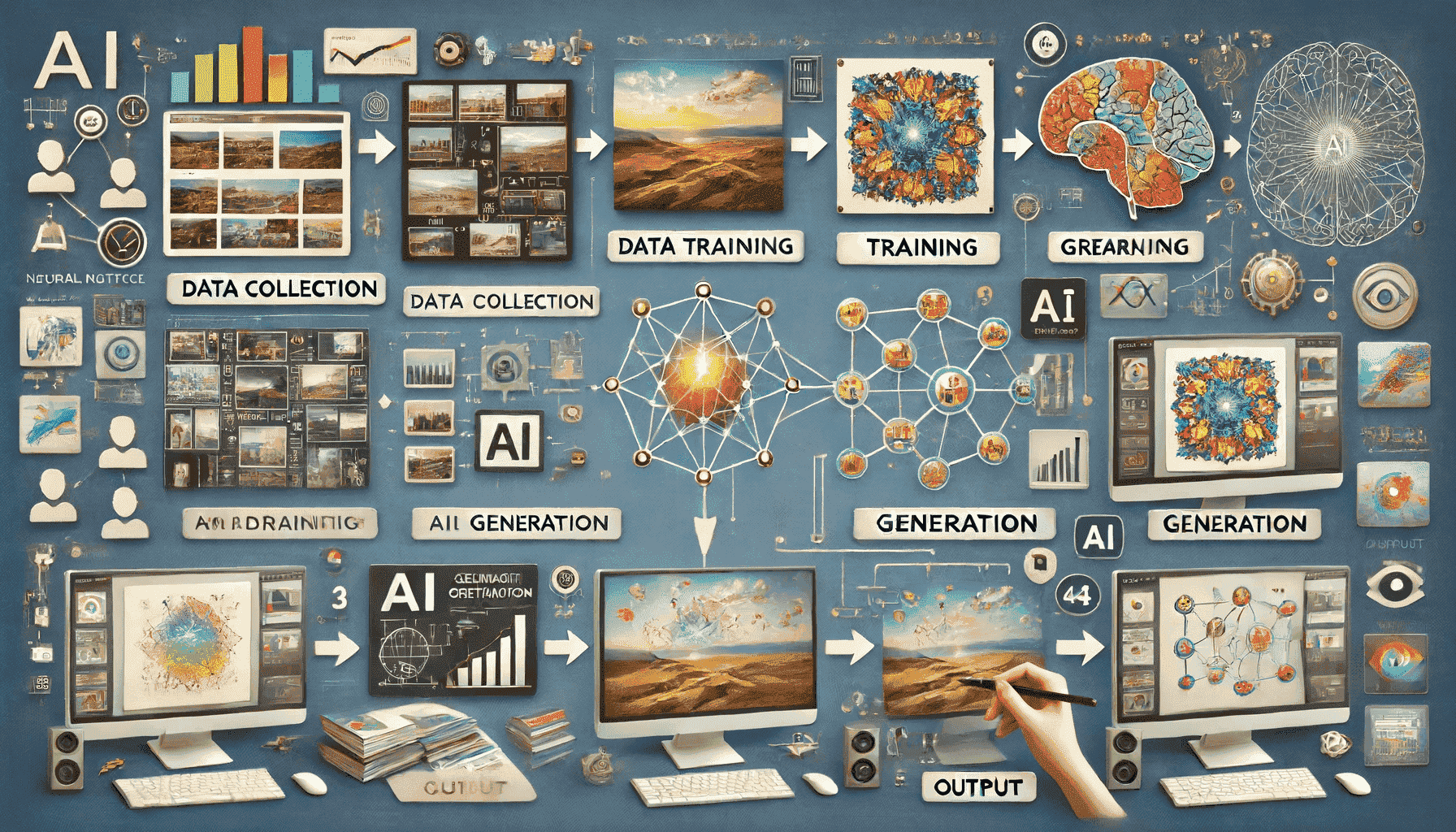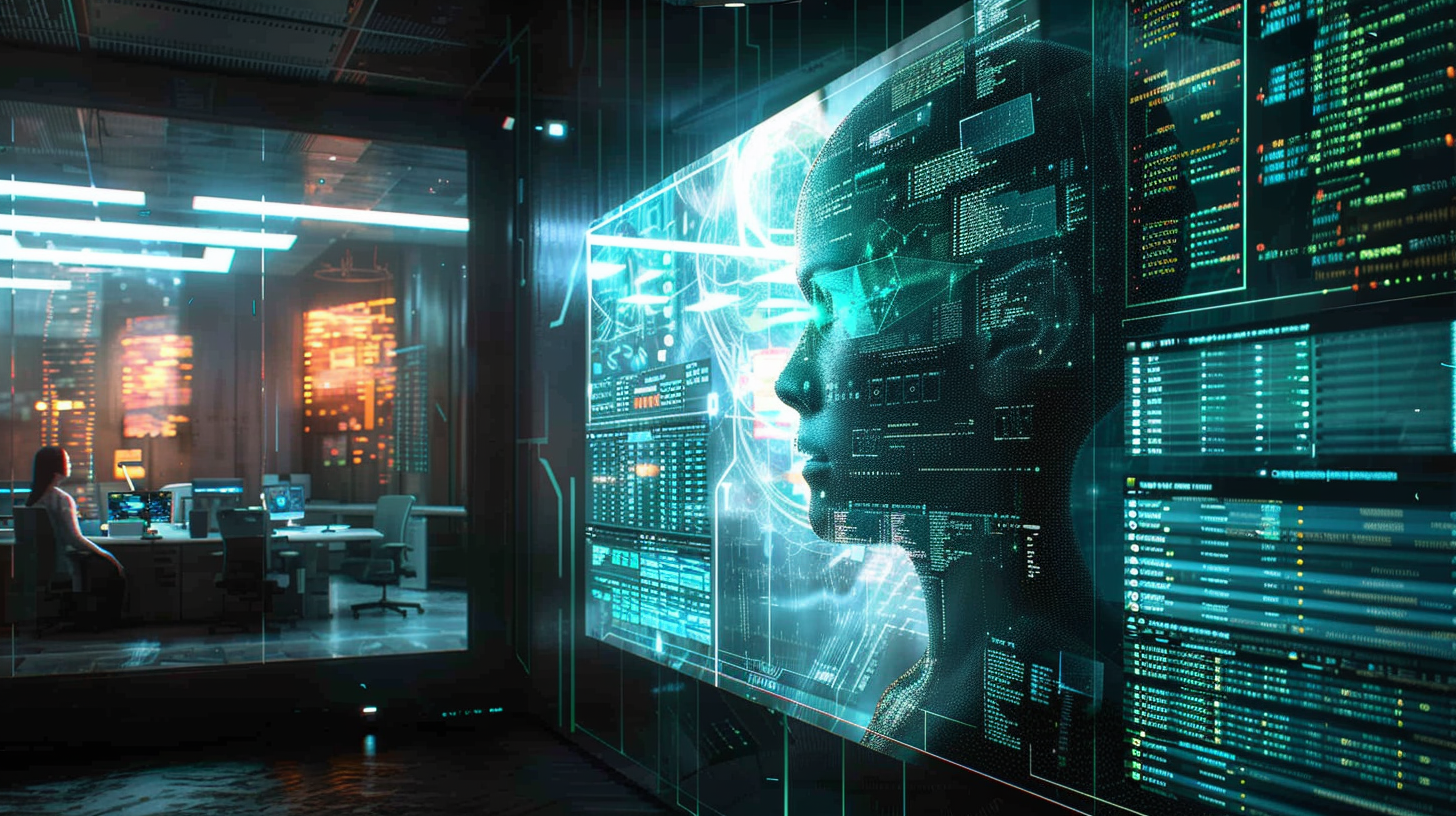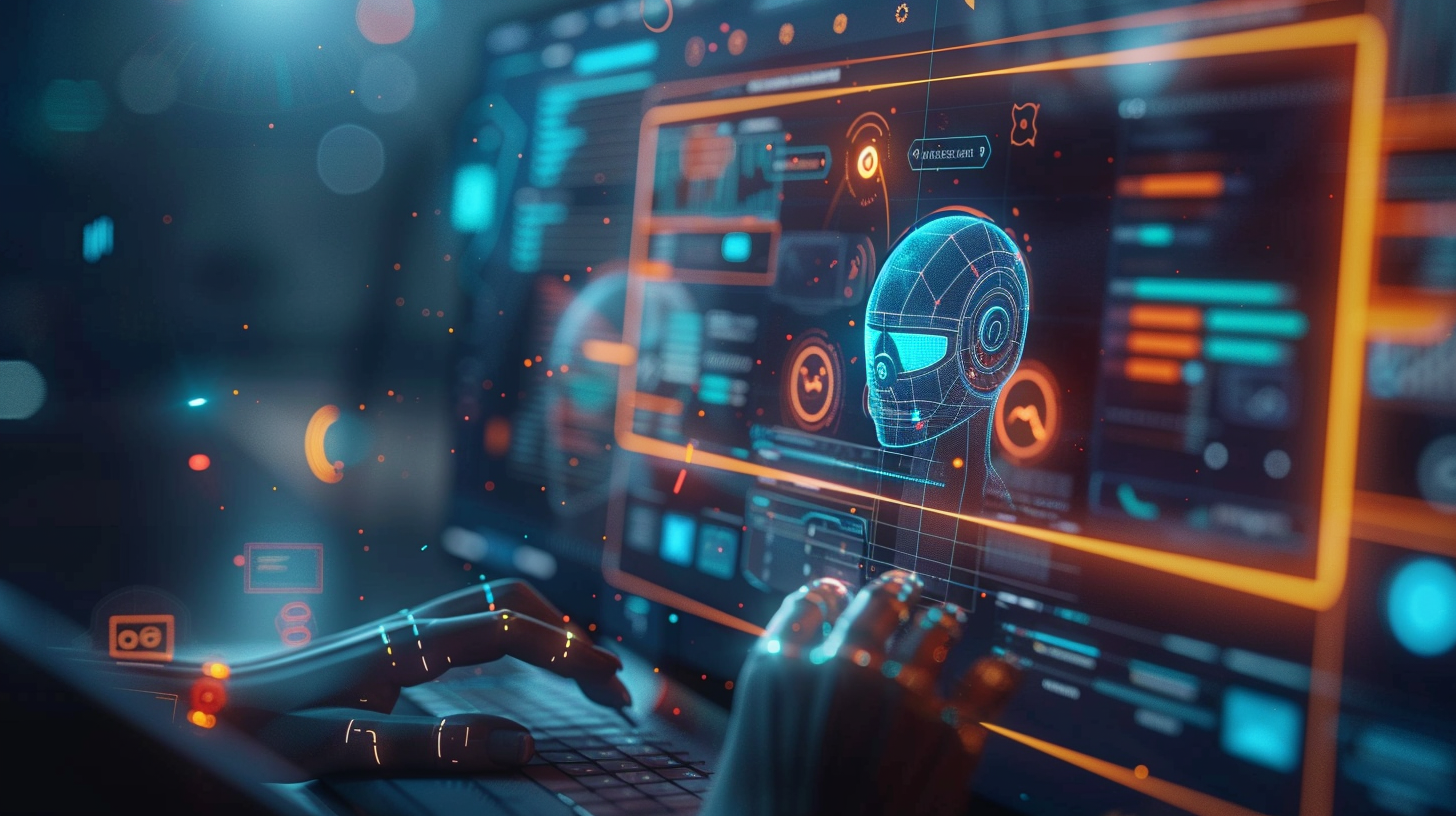
How Does AI Image Generation Work? AI Basics for Beginners
What is AI Image Generation?
AI image generation involves using algorithms to create images. These algorithms learn from a large set of data. Over time, they become better at recognizing patterns and features within this data. As a result, they can generate new images that are realistic and detailed. This process is similar to how an artist might study various techniques and styles before creating original artwork. The technology has a wide range of applications, making it useful in many fields like the art world, digital marketing, and gaming industry. With its versatility and growing capabilities, AI image generation is becoming an increasingly valuable tool across different industries. So let’s dive depp into its applications, challenges and benefits for businesses to master.
Key Technologies Behind The Process
Neural Networks
Neural networks are the backbone of AI image generation. To understand how they work, it’s helpful to know that they mimic the human brain’s structure. These networks consist of layers of nodes, commonly referred to as “neurons.” Each neuron processes a piece of information and passes it on to the next layer. This process is similar to how neurons in our brain work together to understand complex information.
As the data moves through these layers, the network learns to recognize patterns and features. For example, in the early layers, the network might identify simple shapes and edges. Since data progresses through more layers, the network begins to detect more complex patterns, such as textures and colors. This layered approach enables neural networks to understand and generate detailed images.
Moreover, the learning process of neural networks involves adjusting the connections between neurons. This adjustment is done through a method called backpropagation, where the network fine-tunes its parameters to improve accuracy. Over time, with enough training data, the neural network becomes proficient at creating realistic and high-quality images.
In essence, neural networks are crucial for AI image generation due to their ability to learn and replicate the intricate patterns found in real-world images. Their structure and learning methods allow them to transform simple input data into detailed and sophisticated visual outputs.
Generative Adversarial Networks (GANs)
Generative Adversarial Networks (GANs) are a fascinating type of neural network. They consist of two main components: the generator and the discriminator. The generator’s role is to create images, attempting to produce outputs that look as realistic as possible. On the other hand, the discriminator evaluates these images, comparing them to real images and determining how authentic they appear. This interaction between the generator and the discriminator forms a loop.
The generator constantly strives to improve its images based on the feedback it receives from the discriminator. Consequently, the discriminator also improves its ability to distinguish between real and generated images. Over time, this dynamic process leads to a noticeable improvement in the quality of the images produced by the generator. This continuous refinement is what makes GANs so effective and widely used in AI image generation.
AI Image Generation Use Cases
Art and Design
Artists use AI to create unique pieces of art. By employing advanced algorithms, AI can generate new styles and designs that artists might not have thought of on their own. Additionally, AI can analyze existing artworks to understand different artistic techniques and trends. This analysis helps in creating innovative designs that blend various styles seamlessly. Consequently, AI and design symbiosis opens up endless creative possibilities, enabling artists to experiment with new forms and concepts. Moreover, AI tools can assist in the creative process, providing inspiration and new ideas, thus enhancing the artist’s ability to produce diverse and original works.
Marketing and Advertising
Marketers use AI to create engaging visuals. By leveraging genrative AI developments, they can create images specifically tailored to different audiences. This personalization makes the content more appealing to viewers. As a result, the effectiveness of marketing campaigns improves. Additionally, AI can quickly produce multiple variations of an image. This allows marketers to test different visuals and see which ones perform better. Furthermore, AI-generated visuals can be updated easily to reflect current trends and preferences. This adaptability ensures that marketing materials stay relevant and engaging over time. Consequently, businesses can build a strong connection with their audience and achieve better results from their campaigns.
Gaming
Game developers use AI to create realistic graphics. By utilizing AI, developers can generate detailed characters and environments. These characters can exhibit lifelike movements and expressions, while the environments can feature intricate details and dynamic elements. Moreover, AI helps in crafting vast and complex game worlds that feel alive and responsive. As a result, players can enjoy a more immersive and engaging gaming experience. With AI continuously improving, the quality and realism of game graphics are expected to reach new heights, making future games even more captivating and enjoyable.
Top Benefits For Businesses To Use AI Image Generation
- AI image generation saves time and resources for businesses. By automating the image creation process, businesses can quickly produce high-quality visuals without the need for extensive manual effort.
- Furthermore, this technology enables customization, allowing companies to tailor images to meet their unique requirements. For instance, marketing teams can generate visuals that align with specific campaign themes, ensuring consistency and brand coherence.
- Additionally, businesses can adjust image elements such as colors, styles, and compositions to better resonate with their target audience. As a result, AI not only enhances efficiency but also provides a level of flexibility that supports personalized marketing strategies.
Main Challenges
AI image generation is not without challenges. Firstly, creating realistic images requires a vast amount of data. Collecting and processing this data can be a daunting task. Additionally, training neural networks can be time-consuming. It often takes extensive computational power, which can be costly. Moreover, the resources needed for this process can be significant.
Another important aspect to consider is the ethical implications. The potential for misuse of AI-generated images is a serious concern. For instance, there is a risk that these images could be used to create misleading or harmful content. This raises questions about the responsible use of AI technology. Therefore, it is crucial to address these ethical considerations.
In summary, while AI image generation holds great promise, it also comes with its set of challenges. Understanding these challenges is essential for advancing the technology responsibly and effectively.
Future of AI Image Generation
The future of AI image generation looks promising. With ongoing advancements in technology, we can expect even more realistic and detailed images. This progress will enhance the quality and precision of AI-generated visuals. Furthermore, AI will continue to play an important role in various industries. From entertainment and advertising to healthcare and education, the applications are vast and ever-growing.
As AI image generation technology becomes more sophisticated, it will open up new possibilities for creativity and innovation. This will allow professionals across different fields to leverage AI in ways that were previously unimaginable. Additionally, as the technology evolves, it will become more accessible, enabling businesses of all sizes to benefit from its capabilities.
Conclusion
AI image generation is a fascinating technology. It uses neural networks and GANs to create images. These advanced systems learn from vast amounts of data to produce new, realistic images. This technology has many applications, from art to marketing. Artists use AI to explore new creative possibilities, generating unique pieces that push the boundaries of traditional art forms. In marketing, businesses leverage AI to create personalized and engaging visuals that capture the audience’s attention.
Despite challenges, such as the need for large datasets and the time-consuming process of training models, the future of AI image generation is bright. As technology continues to advance, we can expect even more innovative and practical uses for AI-generated images, enhancing various industries and everyday experiences.



